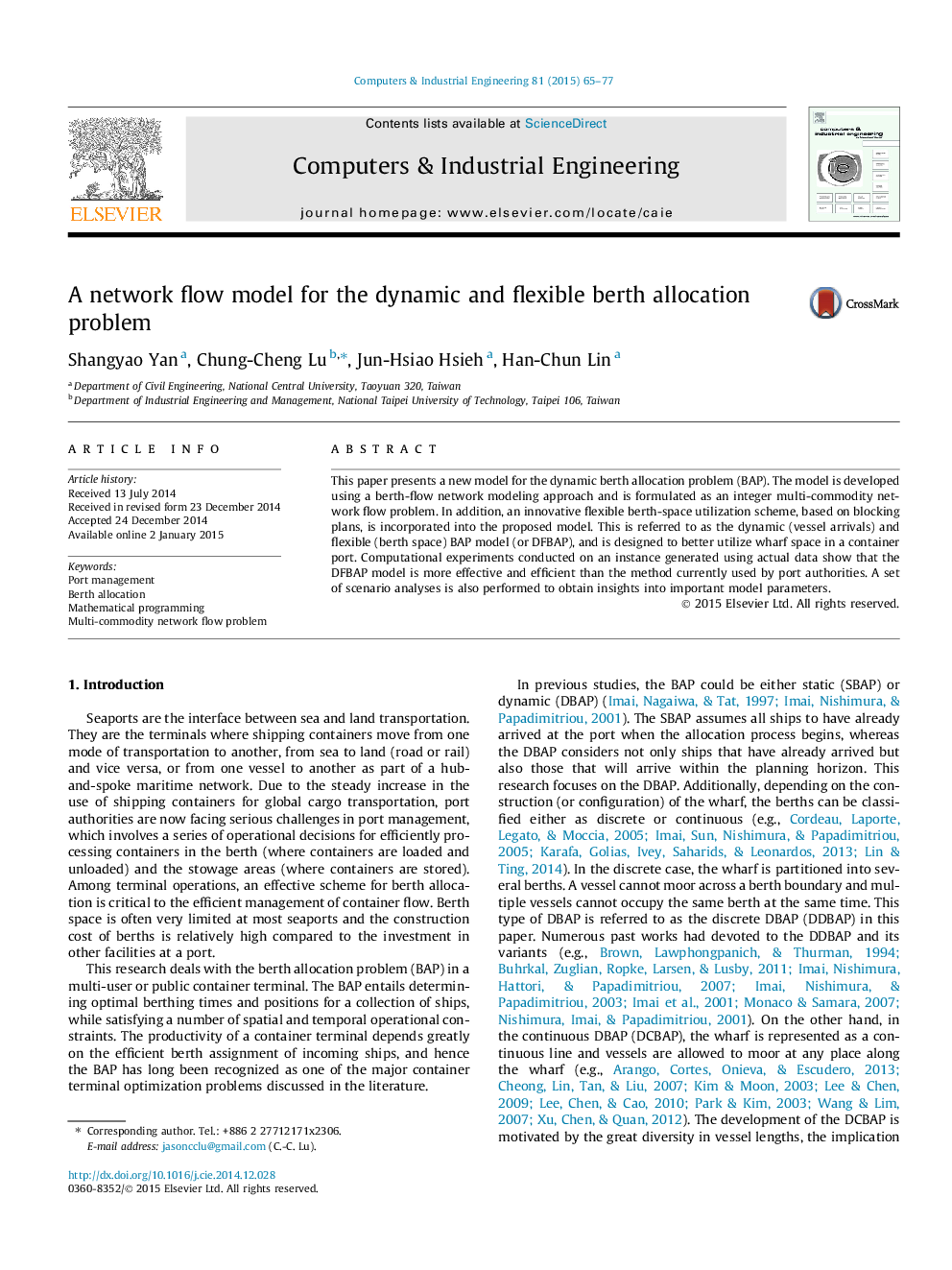| Article ID | Journal | Published Year | Pages | File Type |
|---|---|---|---|---|
| 1133768 | Computers & Industrial Engineering | 2015 | 13 Pages |
•Develop a time–space network flow model for the dynamic berth allocation problem.•Incorporate blocking plans for effective and flexible berth-space utilization.•Conduct computational experiments on an instance generated using actual data.•Perform scenario analyses to obtain insights into important model parameters.
This paper presents a new model for the dynamic berth allocation problem (BAP). The model is developed using a berth-flow network modeling approach and is formulated as an integer multi-commodity network flow problem. In addition, an innovative flexible berth-space utilization scheme, based on blocking plans, is incorporated into the proposed model. This is referred to as the dynamic (vessel arrivals) and flexible (berth space) BAP model (or DFBAP), and is designed to better utilize wharf space in a container port. Computational experiments conducted on an instance generated using actual data show that the DFBAP model is more effective and efficient than the method currently used by port authorities. A set of scenario analyses is also performed to obtain insights into important model parameters.
